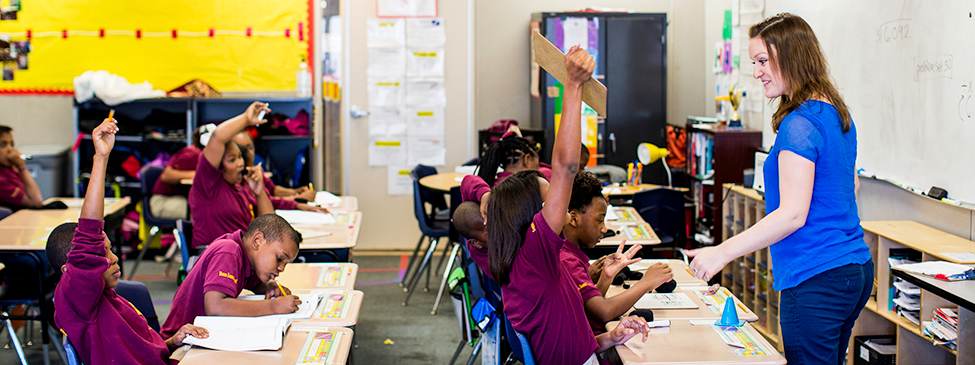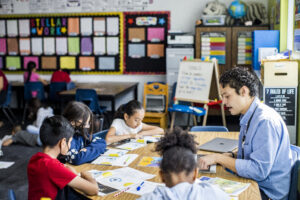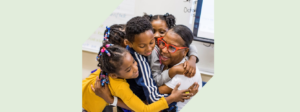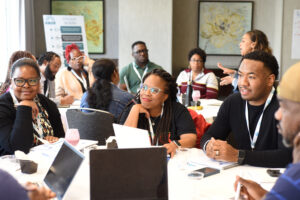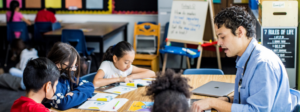If you’re a regular reader of this blog, you know that we recently released our new report, The Mirage: Confronting the Hard Truth About Our Quest for Teacher Development.
We’re often asked how we choose the topics for our research. In large part, they come to light through the work we’re doing on the ground, as partners to school districts, state departments of education and charter management organizations. The questions our clients and partners are wrestling with are typically the same ones we’re wrestling with as an organization.
In the case of The Mirage, those questions centered on how teachers improve. How are school districts (and organizations like ours) currently supporting that improvement? What separates teachers who do improve over time from those who don’t? How can we help more teachers and students reach their potential?
So much of our mission as an organization depends on the answers to these questions. Like our colleagues in districts across the country, TNTP exists to see all kids get a fair shot at life, especially those from underserved communities. To get there, we believe all students need access to great learning opportunities.
Teachers are charged with making many of these opportunities come to life. I’ve felt that responsibility first-hand: teaching second and third grade was the best—and hardest—job I've ever had.
Over the last two decades, we’ve created (and revised, several times) new teacher training programs, coaching models and instructional frameworks, all with the goal of helping more teachers gain the knowledge and skills to provide all their students with an excellent education. We’ve created, adopted and sometimes thrown out different approaches to teacher development, lesson planning and assessment design. We've tried a host of different strategies in the interest of supporting teachers to, as The Mirage puts it, “unlock their full potential.”
It’s been complex, sometimes messy work. I was hopeful that The Mirage would finally reveal a clean, direct solution. Instead, the report has raised some fundamental questions.
So what’s next for us, in response to the findings of our own report?
To start, we’re changing our mindset around teacher growth. We have to face the fact that the answer to helping more teachers improve isn’t wrapped up in a tidy package. Teacher development is a highly individualized process, and there’s no single product or approach that will likely help all teachers get great at their jobs. We have to think about teacher growth as a process that can flourish with the right conditions, rather than as an outcome of a given intervention. For us, that means first understanding what students need, and then considering what their teachers need to get them there.
To do this, we’ve crafted a set of guiding principles for our development work:
Look beyond teacher development as an isolated approach. Instead, we’ll look for ways to integrate different levers that affect teaching and learning. This means looking at evaluation, curriculum development, assessment, school leadership and much more, as interconnected pieces of the development process. For example, when we work with a district to create a new teacher induction program, we’ll aim to integrate this program with its evaluation system, leadership training, and instructional materials.
Test the hypothesis that content is key. We believe content—the actual concepts of the standards and the curricular materials used in classrooms—is a critical driver of improved instruction and student learning, and it’s too often overlooked in teacher training and development. We’ve already begun to adopt a content-specific approach to development that aims to first help teachers define instructional excellence within their content area, and deepen their content knowledge along the way. We’ll be focusing on improving our support to teachers in their first five years, when they’re likely to do their most rapid improving, and part of that focus includes making sure we help new teachers build deep content knowledge in their early years.
Build student-centered interventions and approaches. Too often, our development efforts have focused on what teachers do in the classroom. That sounds reasonable, but the problem is that this approach can mask whether or not students’ needs are being met. We’ll work toward interventions that use student work to drive teachers’ actions, helping teachers to respond to cues from their students and using student responses as measures of success.
Develop teachers’ ability to self-assess their performance in a way that aligns with other objective data. Helping teachers develop a clearer sense of their strengths and weaknesses is an important part of supporting their growth. In part, this means giving teachers better information about their performance from multiple sources. It also means helping teachers develop the ability to compare their own performance to exemplars, and their students’ performance on rigorous assessments to others at their grade level, and make changes to their practice based on those comparisons.
To be sure, we’re just as intimidated by the prospect of upending our approach to teacher development as many of the district and school leaders—and teachers themselves—who have read and responded to The Mirage. Fundamentally shifting how we help teachers improve requires everyone to think innovatively, creating new tools and approaches, and maybe even new school models. I expect that some of the things we try won’t work. But we think our new flexible approach for addressing these challenges, coupled with a focus on identifying clear goals and metrics for success, is the right next step. There’s an opportunity here—and an urgent need—to create environments where innovation is encouraged, both within our own organization and in the districts and schools we partner with.
